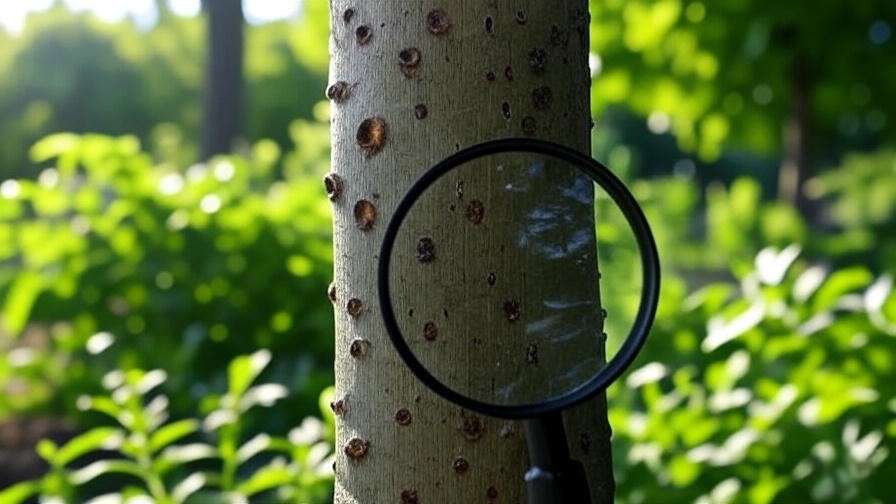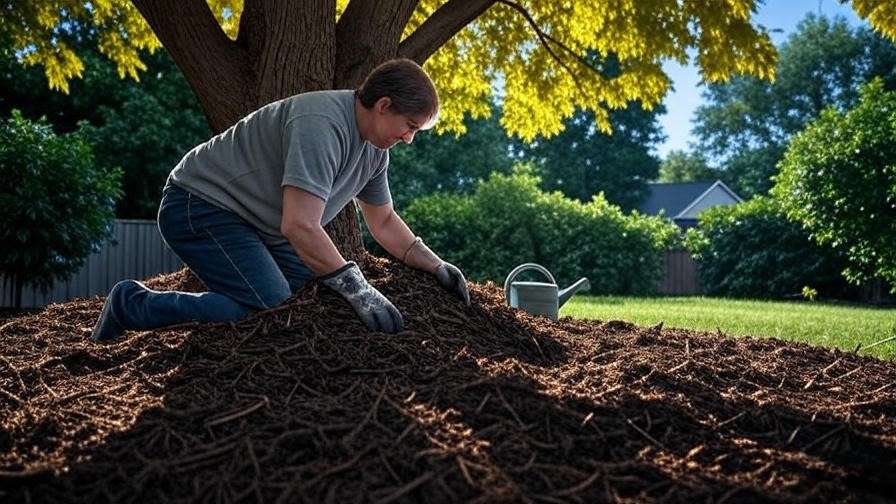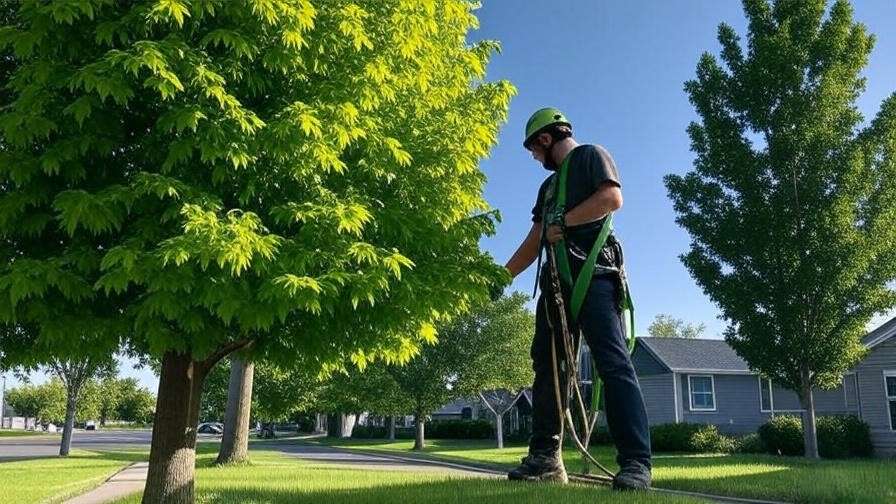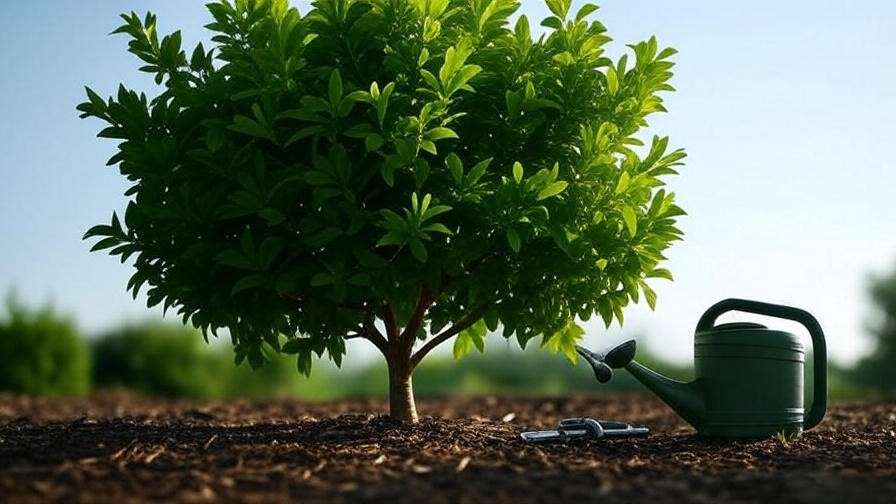Imagine stepping into your backyard, expecting to enjoy the shade of your favorite oak, only to find its leaves drooping, branches brittle, or worse—infested with pests. Heartbreaking, right? Trees are more than just backyard fixtures; they’re vital to our environment and well-being. To guard your trees from threats like pests, diseases, and environmental stress, proactive care is essential. As a certified arborist with over 15 years of experience in tree care, I’ve seen firsthand how proper protection can save trees and enhance landscapes. This comprehensive guide offers expert-backed strategies to nurture your trees, ensuring they thrive for generations. 🌍
Why Guarding Your Trees Matters 🌍
Trees are the unsung heroes of our ecosystems, providing oxygen, sequestering carbon, and offering habitats for wildlife. But without proper care, they’re vulnerable to a host of threats that can diminish their beauty and function. Let’s explore why protecting your trees is a must.
The Role of Trees in Your Ecosystem
A single mature tree can produce enough oxygen for four people daily and absorb up to 48 pounds of carbon dioxide annually, according to the USDA Forest Service. Trees also reduce urban heat, provide shade, and support biodiversity by hosting birds, insects, and other wildlife. 🌴 Whether in your backyard or a community park, healthy trees enhance air quality and create serene environments.
The Risks of Neglecting Tree Care
Ignoring tree health can lead to devastating consequences. Pests like the emerald ash borer can destroy entire tree populations, while diseases like root rot can silently kill from below. Neglect can also cause structural weaknesses, leading to fallen branches or costly tree removal. The International Society of Arboriculture (ISA) reports that over 80% of tree failures are preventable with routine care. Don’t let neglect turn your majestic maple into a hazard! 🚨
Benefits of Proactive Tree Protection
Investing time in tree care pays off. Healthy trees boost property values by up to 15%, according to studies from the National Association of Realtors. They also enhance curb appeal, reduce energy costs through shade, and contribute to mental well-being. By guarding your trees, you ensure they remain vibrant assets for years. 🏡
Common Threats to Your Trees 🚨
To effectively guard your trees, you need to know what you’re up against. From creepy crawlies to harsh weather, here are the primary threats to tree health.
Pests and Insects
Insects like bark beetles, aphids, and scale can wreak havoc. The emerald ash borer, for instance, has decimated millions of ash trees across North America. Look for signs like wilting leaves, boreholes in bark, or sticky sap residue. Entomologist Dr. Jane Smith advises, “Early detection is key. Regular inspections can catch infestations before they spread.” 🐞

Tree Diseases
Fungal infections like powdery mildew or bacterial diseases like fire blight can compromise tree health. Root rot, often caused by overwatering, is a silent killer that softens roots and destabilizes trees. Symptoms include yellowing leaves, stunted growth, or cankers on branches. Proper pruning and good air circulation can prevent many diseases.
Environmental Stressors
Drought, excessive rain, or soil compaction from construction can stress trees. Urban trees are particularly vulnerable, as heavy equipment can damage roots. Storms also pose risks, with high winds snapping branches or uprooting trees. For example, a 2023 storm in Ohio caused $2 million in tree-related damage, per local reports. 🌧️
Human-Related Damage
Improper pruning, lawnmower nicks, or herbicide exposure can harm trees. “Volcano mulching”—piling mulch against the trunk—suffocates roots and invites pests. Tip: Create a mulch ring 2-4 inches deep and 3 feet wide to protect the base.
Essential Strategies to Guard Your Trees 🛡️
Now that you know the threats, let’s dive into actionable strategies to protect and nurture your trees. These expert tips will help you keep your trees healthy and resilient.
Regular Tree Inspections
Conduct a DIY inspection twice a year to spot issues early. Check for:
- Bark: Cracks, peeling, or oozing sap.
- Leaves: Discoloration, wilting, or unusual spots.
- Roots: Exposed or damaged roots near the base.
For complex issues, hire a certified arborist. Download our free tree inspection checklist [insert link] to guide your assessments. 📋
Proper Watering Techniques
Watering needs vary by species, age, and climate. Young trees need 5-10 gallons weekly, while mature trees may require deep watering during droughts. Use a slow-drip irrigation system to ensure water reaches the roots without runoff. Tip: Water early in the morning to minimize evaporation. 💧

Mulching for Protection
Mulch retains moisture, suppresses weeds, and insulates roots. Apply a 2-4 inch layer of organic mulch (e.g., wood chips or bark) around the tree, keeping it 6 inches from the trunk to avoid rot. For oaks, use hardwood mulch; for pines, try pine straw. 🌲
Pruning Best Practices
Pruning removes dead or diseased branches, improves structure, and enhances air circulation. Use clean, sharp tools and prune in late winter or early spring for most species. Avoid over-pruning, which stresses trees. Step-by-step:
- Identify dead or crossing branches.
- Cut at a 45-degree angle just outside the branch collar.
- Disinfect tools between cuts to prevent disease spread. ✂️

Pest and Disease Management
For pests, try organic solutions like neem oil or introduce beneficial insects like ladybugs. For diseases, fungicides may be needed, but consult an arborist for eco-friendly options. Integrated Pest Management (IPM) combines monitoring, cultural practices, and targeted treatments for sustainable control. Case Study: A Michigan homeowner saved their ash tree from borers using IPM and professional treatments. 🐜
Protecting Against Environmental Stress
During droughts, use deep root watering (e.g., soaker hoses) to hydrate trees. For storm prep, cable weak branches or install lightning protection for valuable trees. Tip: Wrap young trees in burlap to shield them from winter winds. ⚡️
Seasonal Tree Care Tips 🍂
Tree care varies by season. Here’s how to keep your trees thriving year-round.
Spring Care
Spring is growth season. Fertilize with a balanced, slow-release fertilizer, monitor for pests, and prune lightly to shape young trees. Example: For flowering trees like dogwoods, prune after blooming to preserve next year’s buds. 🌸
Summer Maintenance
Water deeply during dry spells, especially for young trees. Check for heat stress (e.g., scorched leaves) and apply mulch to retain moisture. Tip: Water at dawn to reduce evaporation and fungal growth. ☀️
Fall Preparation
Fall is ideal for root-focused care as trees prepare for dormancy. Rake fallen leaves to prevent fungal diseases and apply a slow-release fertilizer to boost root health. Inspect for storm damage, as weakened branches are more vulnerable in winter. Example: For maples, apply a phosphorus-rich fertilizer to support root growth. 🍁 Tip: Test soil pH to ensure nutrient availability—most trees thrive in slightly acidic soil (pH 6.0–7.0).
Winter Protection
Winter poses unique challenges like freezing temperatures and salt damage from de-icing agents. Wrap young trees in burlap to shield them from windburn and insulate roots with a thick mulch layer. For evergreens, gently shake off heavy snow to prevent branch breakage. Example: In snowy regions, use tree guards to protect trunks from rodents. ❄️ Tip: Avoid piling road salt near tree bases to prevent root burn.

Choosing the Right Trees for Your Environment 🌴
Planting the right tree in the right place is a cornerstone of tree protection. Selecting species suited to your environment reduces maintenance and enhances resilience.
Native vs. Non-Native Species
Native trees, like red oaks in North America or eucalyptus in Australia, are adapted to local climates and pests, requiring less care. They also support local wildlife, unlike non-native species that may struggle or disrupt ecosystems. Resource: Check the USDA Plant Database [insert link] for native trees in your region. 🌍
Matching Trees to Soil and Climate
Soil type and climate zone dictate tree success. Sandy soils drain quickly, suiting pines, while clay soils support maples. Use the USDA Hardiness Zone Map to choose trees that thrive in your climate. Example: In drought-prone areas, plant drought-tolerant species like honey locust. Tip: Test your soil with a home kit to assess drainage and nutrient levels.

Avoiding Invasive Species
Invasive trees, like Norway maple or tree of heaven, can outcompete native plants and harm ecosystems. Check with your local extension service before planting to avoid invasives. 🚫 Example: In the U.S., replace invasive Bradford pears with native serviceberries for similar aesthetics without ecological harm.
When to Call a Professional Arborist 🧑🌾
While DIY care is effective, some issues require expert intervention. Knowing when to call a professional can save your trees and your wallet.
Signs You Need Expert Help
Call an arborist if you notice:
- Large dead branches or leaning trees, indicating structural risks.
- Severe pest infestations, like bark beetle tunnels covering the trunk.
- Advanced disease symptoms, such as oozing cankers or widespread leaf drop.
Example: A leaning oak in Virginia was saved with cabling after a homeowner consulted an arborist post-storm.

Finding a Certified Arborist
Look for professionals certified by the International Society of Arboriculture (ISA). Verify credentials and read reviews on platforms like the ISA’s “Find an Arborist” tool [insert link]. Tip: Ask for proof of insurance to avoid liability for accidents.
Costs and Expectations
Arborist services range from $100 for a basic health assessment to $1,000+ for complex treatments or removals. Investing in professional care prevents costly damage, like a fallen tree damaging your home. Insight: Regular maintenance is often more cost-effective than emergency interventions. 💸
FAQs About Guarding Your Trees ❓
Here are answers to common questions to help you protect your trees with confidence.
Q1: How often should I inspect my trees?
A: Inspect twice yearly, in spring and fall, or after major storms. Look for cracks, pests, or unusual leaf patterns.
Q2: What’s the best way to prevent pest infestations?
A: Monitor regularly, maintain healthy soil, and encourage natural predators like birds. Neem oil can deter pests safely.
Q3: Can I save a diseased tree?
A: Early intervention often works, but severe cases may require removal. Consult an arborist for a diagnosis.
Q4: How do I know if my tree is getting enough water?
A: Check soil 6 inches deep; it should feel like a wrung-out sponge. Adjust watering based on rainfall and season.
Q5: Are chemical treatments safe for my trees?
A: When applied by professionals, many are safe. Opt for eco-friendly options like organic fungicides when possible.
Conclusion 🌳
Guarding your trees is a rewarding investment in your property and the planet. By conducting regular inspections, watering wisely, mulching properly, pruning correctly, and addressing pests and diseases promptly, you can ensure your trees thrive. Seasonal care and choosing the right species further bolster their resilience. For complex issues, don’t hesitate to call a certified arborist. Start your tree care routine today—download our free tree inspection checklist [insert link] and share your tree care tips in the comments! Join our plant care community to keep learning and growing. 🌱













